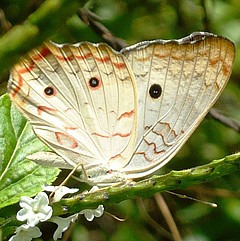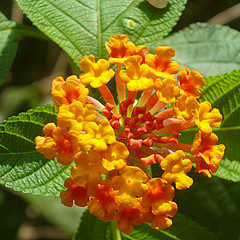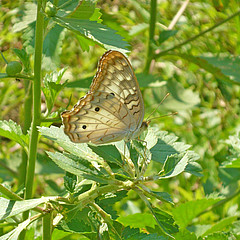Anartia jatrophae (Linnaeus, 1763)
Common Name:
White Peacock
White Peacock
Synonyms:
Papilio jatrophae (Linnaeus, 1763)
Natural History:
This species is common in all collections. Always is abundant and common in open areas, garten, ruderal vegetation. Easily observed in flowers (e.g. Lantana camara, Stachytarpheta cayennensis - Verbenaceae). On sunny days and with availability of flowers can occur all year. Brown (1992) reports that this species sleeps in groups in southeastern Brazil.
Distribution:
Argentina; Ayiti; Brasil; Costa Rica; Cuba; Honduras; Jamaica; México; Panamá; Paraguay; Puerto Rico; Suriname
Argentina; Ayiti; Brasil; Costa Rica; Cuba; Honduras; Jamaica; México; Panamá; Paraguay; Puerto Rico; Suriname
Feeding Adult:
Adults feed on nectar
Feeding Caterpillars:
Compiled by Beccaloni et al. 2008, in Brazil are recorded as host-plant:
Acanthaceae: unidentified species
Verbenaceae: Melissa sp., Aloysia sp., Aloysia triphylla,
Labiateae: Hyptis atrorubens, Melissa officinalis, Mentha pulegium
Are recorded plants of Euphorbiacea in Argentina, and Scrophulariaceae in contries of Central America.
Color:
cream, brown, white
cream, brown, white
Habitat:
open, urban, anthropogenic
open, urban, anthropogenic
Publications:
- Brown Jr. K (1992):
- Borboletas da Serra do Japi: diversidade, habitats, recursos alimentares e variação temporal. In:n História Natural da Serra do Japi: ecologia e preservação de uma área florestal no Sudeste do Brasil., Campinas, Unicamp: 142-186
- Beccaloni G.W, Viloria A.L., Hall S.K., Robinson G.S. (2008):
- Catalogue of the hostplants of the Neotropical butterflies. Book., London, S.E.A., Ribes, CYTED, Natural History Museum, IVIC: 1-536






